Osprey
Books Recommendation |
||
|
|
|
|
Osprey
Books Recommendation |
||
|
|
|
|
| Elite Series | ||||
Frontpage |
Description/contents |
Author |
Publisher |
Buy from |
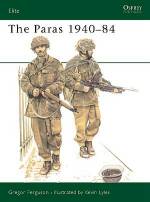 |
Elite
01
The Paras 1940 - 1984 On the night of 7 February 1941 the first British parachute unit was sent into action. Their target was the Tragino Aqueduct in Italy, and although the mission itself did not go to plan, the effect on Italian morale of this landing in the heart of their country was considerable. It was also a valuable achievement for the parachutists to have proved themselves in action, even on so small a scale, at a time when Britain was reeling from defeat to defeat. Since then, British Airborne Forces have proved themselves in action time and time again, in a variety of different theatres from Europe to the Falklands. |
Greg Ferguson |
||
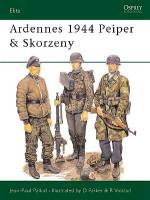 |
Elite
11 Aedennes 1944 Peiper & Skorzeny From the earliest planning stages of the German counter-offensive in the Ardennes, Hitler was convinced of the importance of taking the Meuse bridges. He resolved that, when his forces broke through the US lines, one special unit should be dressed in American uniforms and issued with American weapons and vehicles. In this guise they could take advantage of the surprise and shock of the breakthrough, and move forward to the Meuse bridges as if they were retreating Americans. |
Jean Paul Pallud |
||
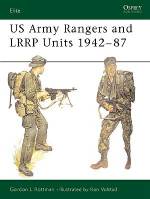 |
Elite 13
US Army Rangers & LRRP Units 1942-87 Ranger - the very word conjures up visions of small, highly trained units executing lightning-fast raids on an unexpecting enemy. It is also synonymous with high esprit de corps and excellence at arms. The US Army Rangers provide units of well-disciplined soldiers who possess the knowledge and courage to operate on their own, deep behind enemy lines. Gordon L. Rottman explores the history of these unique troops, starting with the original 'Rogers' Rangers' company of 1756, whose daring operations and deep penetrations of enemy-held country laid down the pattern for all subsequent Ranger units to follow. |
Gordon Rottman |
||
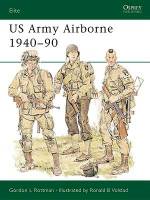 |
Elite
31 US Army Airborne 1940-90 The first 50 years of the US Army airborne arm is a story of continuing battles with the nation's enemies, of battles within the Army's hierarchy, of change, and of adaptation. If there is any single attribute the airborne soldier can claim as his most sterling, it is his uncanny ability to adapt his flexibility. The very nature of a paratrooper demands this ability to adapt. The motivation and ésprit de corps it develops within these units is something not to be taken lightly. |
Gordon Rottman |
||
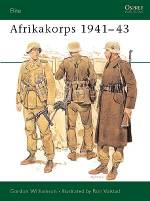 |
Elite
34
Afrikakorps 1941-43 The campaign in North Africa between September 1940 and May 1943 holds not only an enduring fascination for postwar generations; but also a perhaps unique degree of nostalgia for some surviving participants. The campaign was no less costly in terms of human lives and material than many others; but regret at the cost is accompanied by positive memories in the minds of many veterans. This is not to suggest that the dead have been forgotten; but an almost mystical bond nevertheless exists, even between former enemies, amongst veterans of the desert campaign. |
Gordon WIlliamson |
||
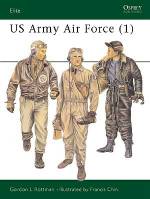 |
Elite
46
US Army Air Force (I) In June 1941 the US Army's air organizations were consolidated under a single command, the Army Air Forces or AAF. Its expansion was rapid and massive, and its contribution to the war effort was substantial. Books abound describing the AAF's impressive combat record, but little has been published to record what the men inside the machines wore to stay alive and effective in the air and on the ground, or, as often as not, in the water. |
Gordon Rottman |
||
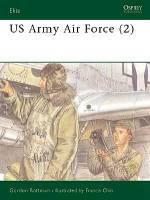 |
Elite
51
US Army Air Force (II) While the most conspicuous components of the US Army Air Forces in World War II were the air units, there were also hundreds of ground units and organizations. Besides assigned military personnel the AAF also employed thousands of civilians. Many unique outfits were designed to meet the AAF's special needs. Uniformed civilians also possessed a variety of unique uniforms and insignia. These general issue and specific uniforms are the subject of this volume. |
Gordon Rottman |
||
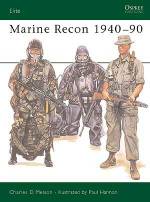 |
Elite
55
Marine Recon 1940-90 In 1976 Maj. James Capers Jr. welcomed new men and their families into a force reconnaissance company. 'Only the most capable Marines are selected for this duty due to rigid mental and physical demands. A very thorough screening of each applicant is conducted to test alertness and endurance. The result is a small elite unit with highly qualified Marines who are considered the best in the world'. |
Charles Melson |
||
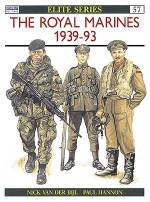 |
Elite
57
The Royal Marines 1939-93 The Admiral's Regiment was formed in 1664 and the name 'Marines' first appears in the records in 1672. Since then Marines have taken part in more battles on land and sea, all over the world, than has any other branch of the British Armed Forces. In recent times, Royal Marines have been deployed to Bosnia-Herzegovina in a number of roles and are still serving with the NATO implementation Force today. |
Nickvan Der BIJL |
||
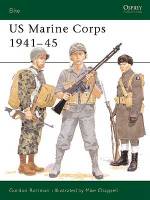 |
Elite
59
US Marine Corps 1941-45 While the US Marine Corps was one of the smallest of American armed services in World War II, its contribution to the final victory cannot be overstated. The US Marine Corps may have only comprised 5 percent of America’s armed forces, but it suffered 10 percent of all World War II combat casualties. Above all, he amphibious nature of the war in the Pacific imposed on the Marine Corps greater tasks than any it had ever before been called upon to perform. This title details the organization, weapons and equipment of the US Marines of World War II. |
Gordon Rottman |
||
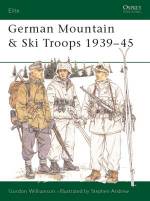 |
Elite
63 German Mountain & Ski Troops 1941-45 Fighting in every theatre from the burning sands of North Africa to the icy wastes above the arctic circle the German Army's Gebirgstruppen troops were some of the most effective in the whole of the Wehrmacht. Their esprit de corps and morale were extremely high and their commanders, men such as Eduard Dietl, the 'Hero of Narvik', and Julius 'Papa' Ringel, were idolized by their men. Dietl himself was the first soldier of the Wehrmacht to be awarded the coveted Oak leaves to the Knights Cross of the Iron Cross. |
Gordon Williamson |
||